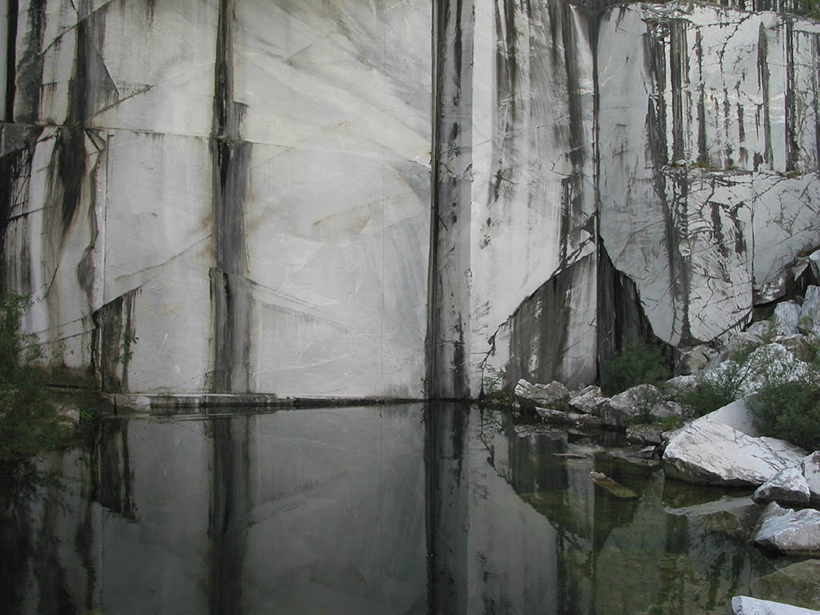Source: Journal of Geophysical Research: Solid Earth
Since the time of ancient Rome, marble from the quarries of Carrara, Italy, has been used in many structures and sculptures, including Michelangelo’s famed David. But the evolution of the marble’s prized fine-grain structure—and for that matter, any other marble’s grain structure—isn’t well understood.
In a new paper, Quintanilla-Terminel and Evans describe a novel technique to investigate how Carrara marble deforms under certain high-temperature and high-pressure conditions. The new method could improve scientists’ understanding of large-scale rock deformation in nature.
In the field, the deformation, or strain, caused by rocks sliding past each other is accommodated at different scales by various mechanisms. Accurate models describing natural deformation therefore need to address different scales to adequately incorporate important microscale properties of the rock. However, tracking strain accommodation at microscales during experiments replicating natural deformation is a technical challenge.
The researchers developed a technique to analyze strain in unprecedented detail. They took inspiration from a classic technique in which a cylinder is split along its length, deformed, split open again, and observed in detail to understand the microstructural changes associated with the deformation.

In this case, the scientists prepared split cylinders of Carrara marble. Using microfabrication techniques like the ones used in the semiconductor industry, they marked the interior surface of one of the halves with a precise, custom-designed grid of metallic markers tens of nanometers thick. Each gridded half was then paired with its complementary ungridded half, and the composite cylinder was deformed at high pressure and temperature.
Microscopic images of the inner grids, taken before and after deformation, allowed the scientists to investigate spatial variations of strain within marble that is slowly deforming at high temperatures and pressures. The team subjected the cylinders to 300 megapascals of pressure and temperatures ranging from 400°C to 700°C, i.e., conditions prevalent at more than 10 kilometer depth. The heterogeneity in strain is quite remarkable and may vary by large factors over spatial scales as small as tens of micrometers.
The authors observed that at higher temperatures and pressures, points of deformation became more homogeneous and concentrated in smaller areas within the grains of the marble. Strain features called twins and slip bands also disappeared at higher temperatures. These fine-scale observations could help improve microscale models of deformation and eventually contribute to large-scale geodynamic models. (Journal of Geophysical Research: Solid Earth, doi:10.1002/2016JB012970, 2016)
—Sarah Stanley, Freelance Writer
Citation:
Stanley, S. (2016), New technique tracks rock deformation at a micrometric scale, Eos, 97, https://doi.org/10.1029/2016EO058301. Published on 08 September 2016.
Text © 2016. The authors. CC BY-NC-ND 3.0
Except where otherwise noted, images are subject to copyright. Any reuse without express permission from the copyright owner is prohibited.

